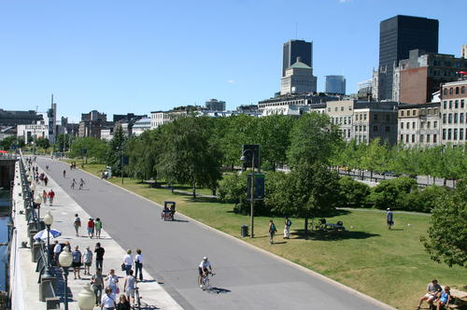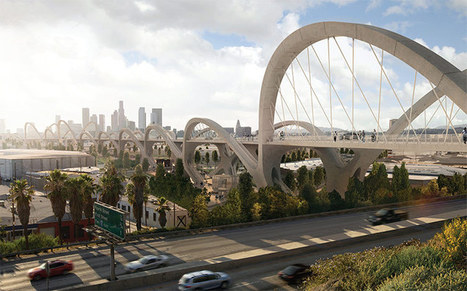Three finalists present plans for major new bridge in Los Angeles:
The groups—headed by HNTB, AECOM, and Parsons Brinckerhoff— have all been shortlisted to create the city’s new Sixth Street Viaduct. Their vivid public presentations were the first glimpse of what will likely be LA’s next major icon.
The original 3,500-foot-long structure, a famous rounded Art Deco span designed in 1932, has been deemed unsalvageable due to irreversible decay, and in April the city’s Bureau of Engineering called for a competition to design a new, $400 million, cable stayed structure.
Following the city’s lead, all three teams presented plans that not only showcased memorable forms, but embraced people-friendly designs, including pedestrian paths, parks, and connections to the river below. The push reveals Los Angeles’s focus on attracting people and talent through increased livability. Such moves are a welcome, if uphill battle considering that so much of the city has been designed for cars, not people...
Via
Lauren Moss,
Gerry B



 Your new post is loading...
Your new post is loading...










